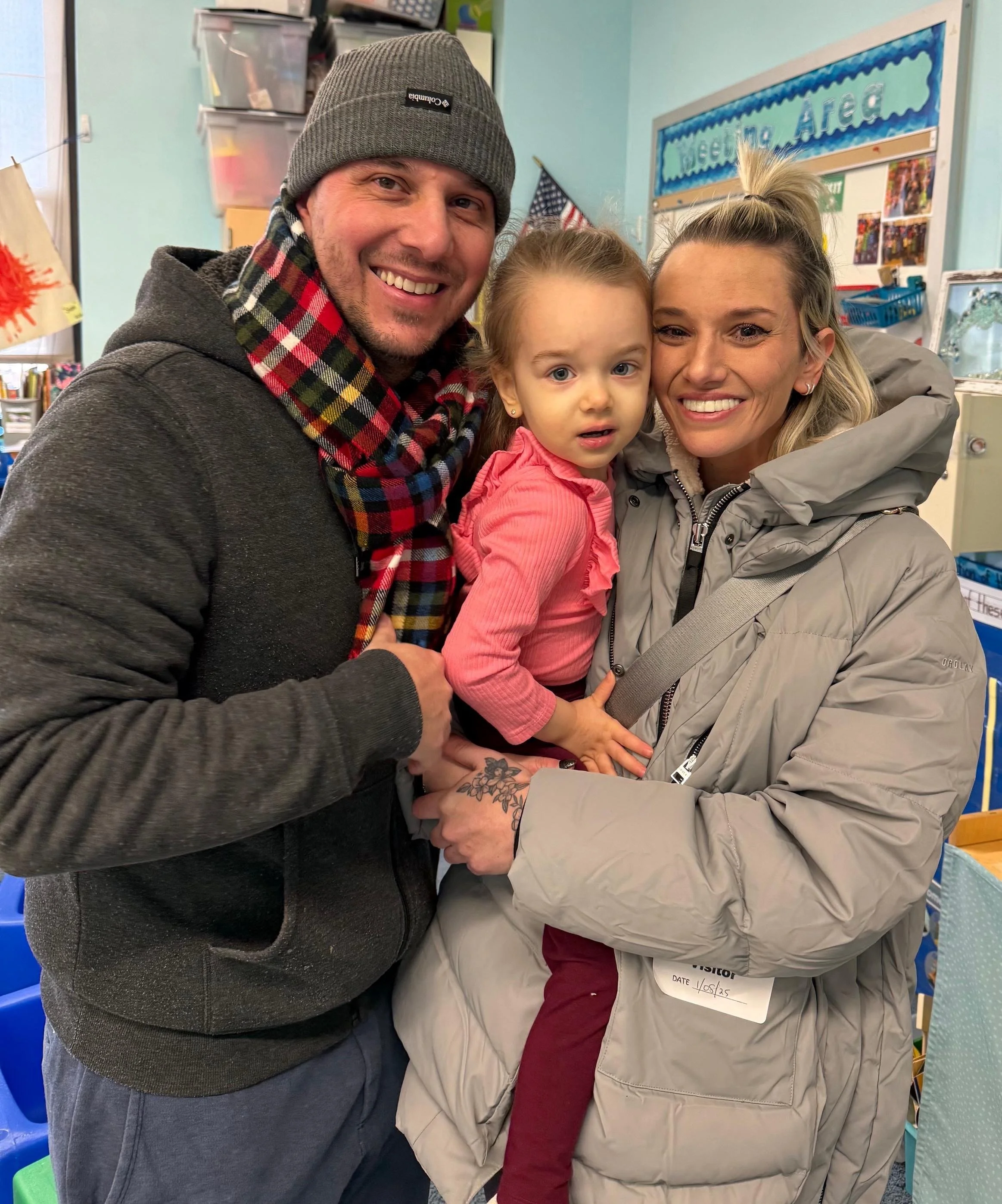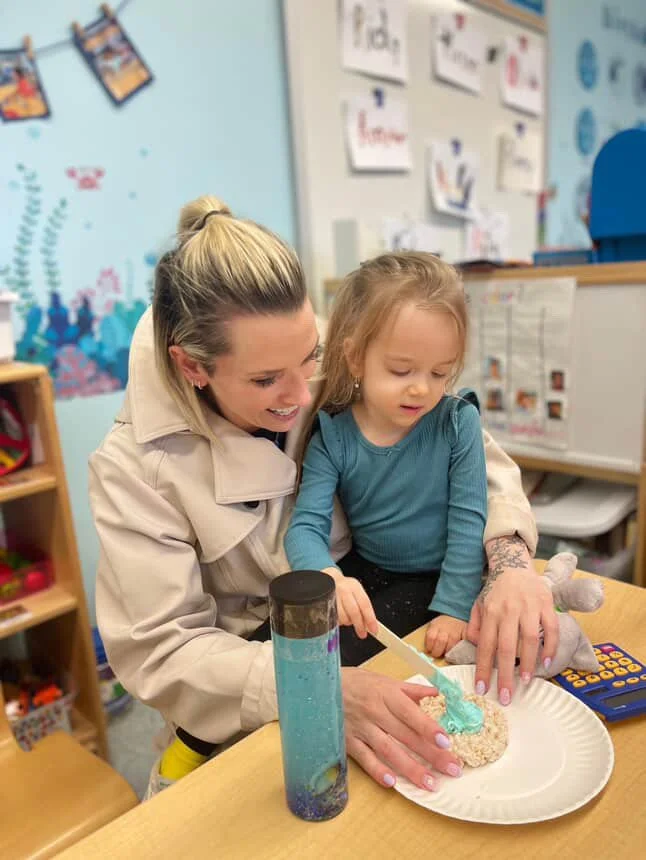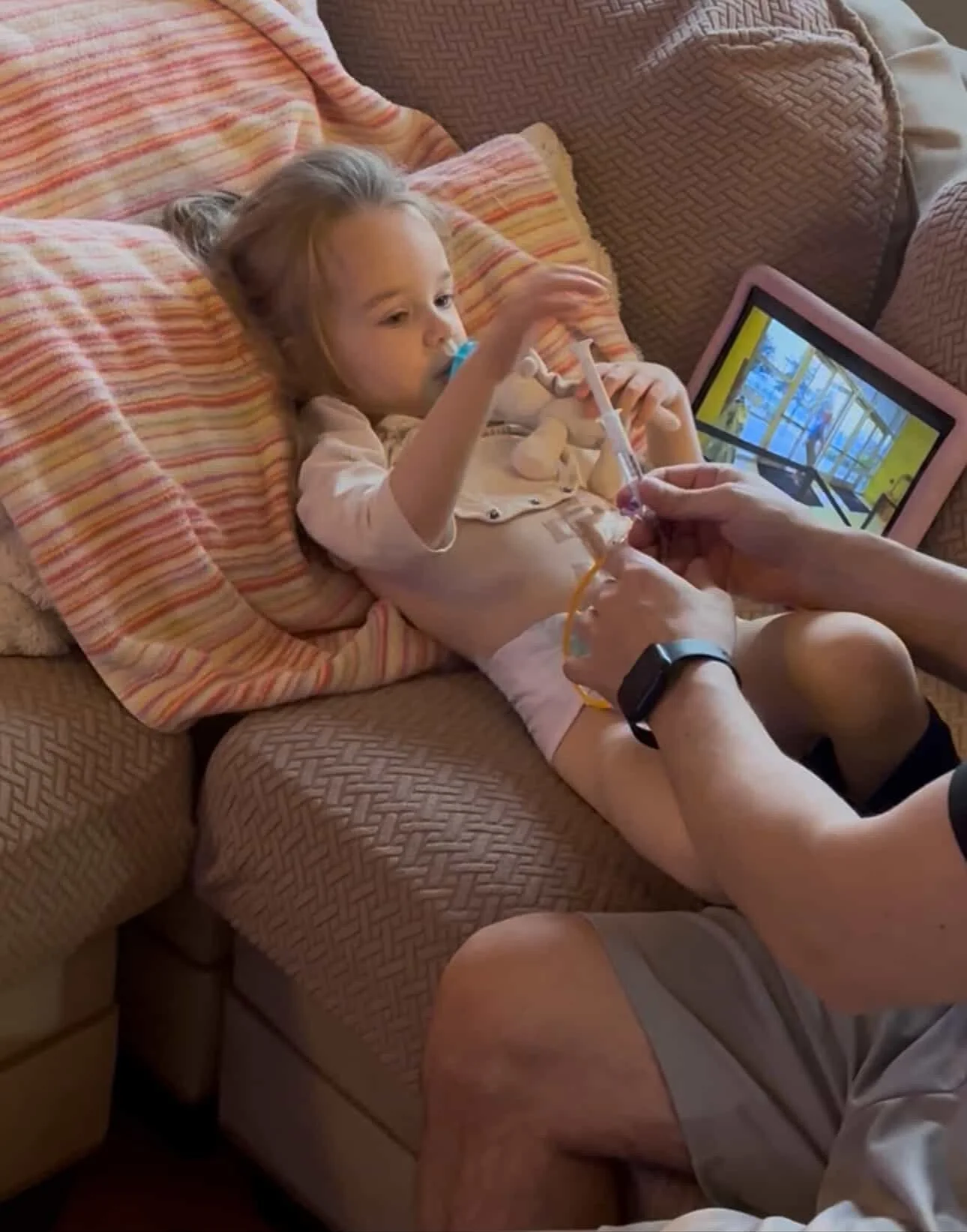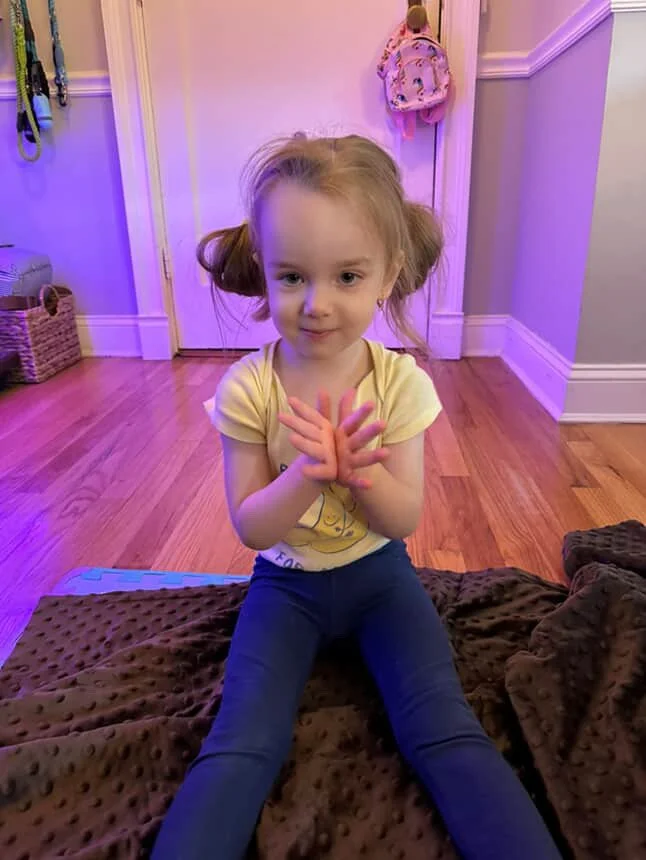Here for the Celebrating – and the Venting
Fellow tube-feeding parents have seen this young family through “the good, the bad and the ugly”.
Michelle Medić lives in New York with her husband, their daughter Mila and their dog, Ollie. Tube-feeding entered this scene soon after Mila did when, in her early months, she was struggling to eat and gain weight.
“We did tests upon tests upon tests, and no one could figure out what was wrong,” says Michelle. That is, until a swallow study revealed Mila was silently aspirating, signalling her need for a nasogastric (NG) tube and, after this, a gastrostomy (G) tube.
“I was scared of tube-feeding because I felt like, as a mother, I had given up,” says Michelle. “But I knew, at the same time, I was trying my hardest to get my daughter a diagnosis and figure out why this was happening.”
Mila’s conditions include a laryngeal cleft and laryngomalacia, which went undiagnosed for her whole first year. Now three and a half, with several surgeries behind her, she’s finding her own way to oral eating – ever-supported and cheered on by a mother who says, “she’s my hero”.
Here, Michelle shares some of her family’s story – and how she’s taken comfort in connecting with other parents on a similar path.
How were you feeling when Mila first started tube-feeding and what helped you, if anything, during this time?
We were scared, first-time parents. None of our friends experienced what we did and we didn't know who to turn to. I found solace in feeding-tube Facebook groups where I spoke with so many other parents going through the same thing.
It felt incredible to have people who truly understood what we were going through. We celebrated the little milestones, I vented to them on my bad days – had plenty of those! – and they gave me advice whenever I had questions. I have a few of them who I still speak to all the time.
How do you feel about Mila tube-feeding nowadays?
I still have a troubled relationship with tube-feeding because while I know it’s necessary for my daughter to thrive and survive, we are also working really hard in feeding therapy for her to become an oral eater.
However, deep down in my soul I know that, until she’s able to sustain herself on her own, be it one year or 10, tube-feeding will be a part of our lives. And I’m okay with that.
What helped you to get comfortable with tube-feeding – both practically and emotionally?
Just the realisation that this tiny gadget is saving my daughter’s life and helping her thrive in the years that are so important for growth and development.
Everything happened so fast that I didn't even get a chance to process this massive change in our lives. I gave birth to Mila and, poof, within three months we were a medical and tube-feeding family.
What are the biggest challenges you've faced in your tube-feeding experience?
Hands down, the biggest challenge I’ve faced – and still face – in tube-feeding is the oral eating relationship [how the mouth processes food].
Mila was born with a laryngeal cleft so, for a long time, she needed the feeding tube to safely eat and thrive. It's now been two years since the repair and since she was cleared to eat and drink by mouth – and for a few months, she did. She ate everything and was so eager to try anything. Then overnight, it all stopped. No rhyme or reason.
Mila’s gastroenterologist believes she has ARFID [avoidant/restrictive food intake disorder], which would explain some of the behaviours and makes the oral eating relationship very complicated. Mila has a few foods in her oral roster and the rest of her calories we make up in tube feeds.
I struggle daily with just accepting that this is how life will be for the foreseeable future, and focusing on her oral journey and feeding therapy.
Meals are routine, carefully done, with a protocol. It’s a lot of work. Sometimes if I am busy or whatnot, I’ll just give her a tube feed. I instantly feel guilty because one part of me is like, “come on! we have to practice oral meals!” and the other half says, “well, she is a child who needs tube-feeding in addition to oral because of x, y, z reason…”.
It’s a lot of work on my part to work on accepting that the tube is a part of our life, and will be for however long it needs to be.
What are your go-to tube-feeding accessories, communities and/or resources?
My go-to resources for tube-feeding are Facebook groups – specifically two I have been in for three years now. A lot of new families come and go, but there are a bunch of us who’ve been a part of it forever.
These are people who, from the day we knew we were a tube-feeding family, have been there through it all with me. They've been there to answer my questions, celebrate the little wins and milestones, and help me when I was feeling so low.
I’ve exchanged numbers with a few parents and we don’t even live in the same state, but we text or call all the time. It is really nice to have another parent to talk to who truly understands it all – the good, the bad and the ugly!
Accessories I cannot live without are, bear with me here, clear UV gel nail polish and a UV lamp. Why? I use it to paint over the numbers on the syringes. It helps them last so much longer, rather than coming off after a few washes.
Can you tell us about the funniest, messiest or most awkward tube-feeding situation you’ve found yourself in?
In the beginning, I “fed” my couch more than my own daughter. I’d be so tired that I’d forget to push the connector into the port and the pump would be running and running and I’d be like, “why am I wet?” Turns out, my daughter is just there minding her own business while I feed my couch instead of her!
What words of advice do you have for people and families who are new to the tube-feeding experience?
It would be to ask yourself, how would this benefit my child? Would this save them? Would it buy us time until we can find out whatever is wrong? I’ve spent many nights holding my daughter’s hand through the metal rails of a hospital crib, silently crying so she wouldn’t see or hear me, praying to find out what was wrong and how we could help her.
The G-tube gave us freedom to keep her alive, healthy and safe while we worked tirelessly to find a reason for her medical issues and, subsequently, a solution. Take the time and weigh not the pros and cons, but your pros and cons. Every child is different so a con to you might not be one to me. A pro to me might not be one to you. In the end, know that you and you alone are your child's advocate.
You may feel torn and you may feel like every choice you make could be the wrong one but, in the end, you have given your child life. You know in your heart what the right decision is. Trust in that always.
And never forget, while your family and friends might not understand or know much of what you are going through, or the true weight of the choices you have to make, you have a whole community behind you who will support you, answer any questions you may have and be there on your worst and best days.





